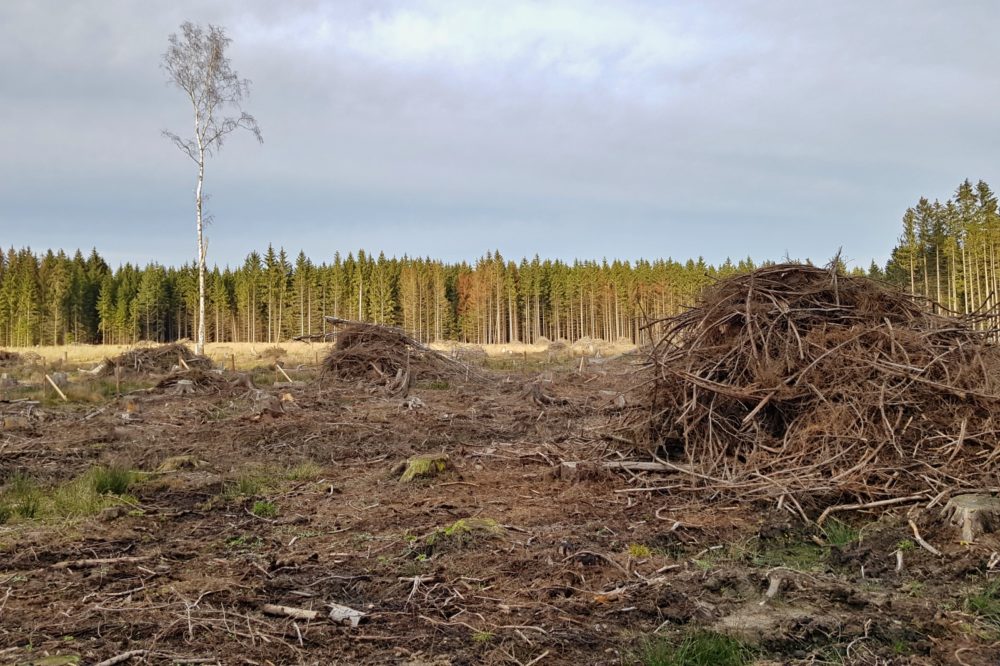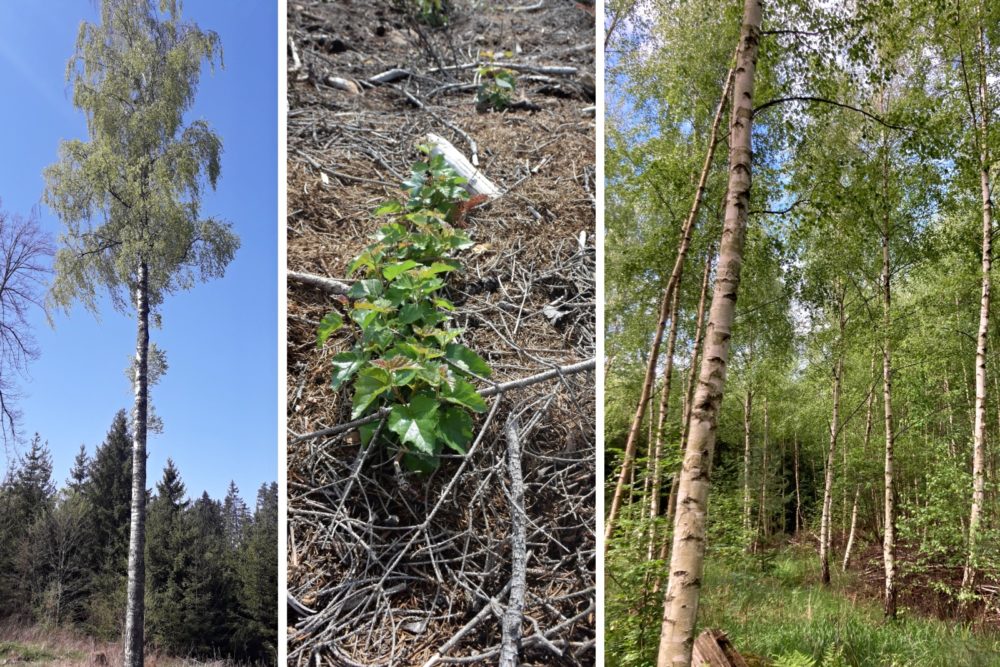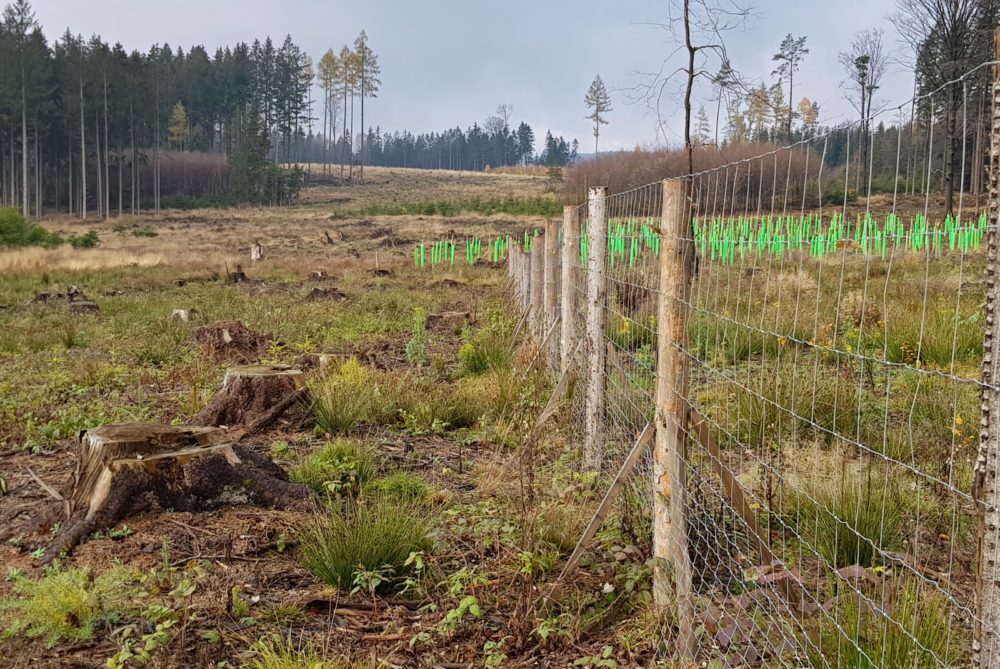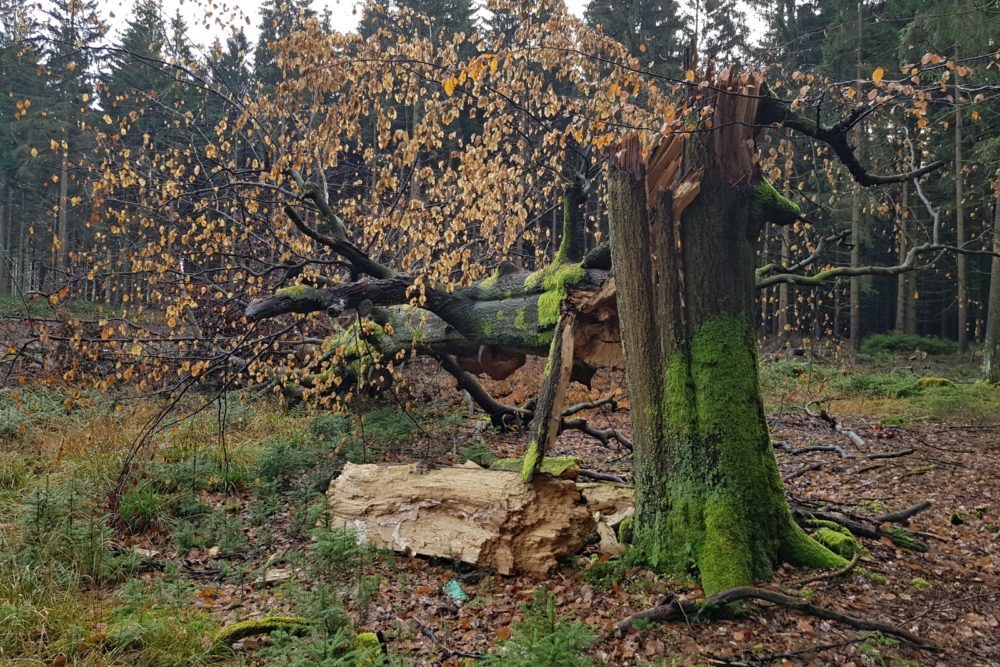Scientists help owners solve forest restoration on calamitous clearings
 Over the past two years, the bark beetle infestation has been gradually subsiding; however, the forest owners will need to address its repercussions for several decades to come. The challenge is not only restoring the forest and dealing with the large-scale clearings that have been created but also ensuring the ongoing care of the newly established stands. This care is necessary to promote diversity among the tree species and to create a varied age and structural composition within the new forests. Nevertheless, cultivating such a forest will be a demanding task that will extend beyond one generation of foresters.
Over the past two years, the bark beetle infestation has been gradually subsiding; however, the forest owners will need to address its repercussions for several decades to come. The challenge is not only restoring the forest and dealing with the large-scale clearings that have been created but also ensuring the ongoing care of the newly established stands. This care is necessary to promote diversity among the tree species and to create a varied age and structural composition within the new forests. Nevertheless, cultivating such a forest will be a demanding task that will extend beyond one generation of foresters.
Scientists of the Forestry and Game Management Research Institute (FGMRI /VÚLHM/) have been working on restoring and tending to forest stands for a long time. They aim to assist forest owners with this challenging task by sharing new research findings. One of the most effective ways they do this is by demonstrating practical examples of potential methods for establishing a new generation of forest on clearings.
The project “Implementation of innovative forest restoration procedures in calamity clearings concerning the support of biodiversity and increasing the functionality of forest ecosystems” was carried out by FGMRI in cooperation with the Forest Cooperative of Municipalities (LDO) Příbyslav from 2022 to 2024. This project was made possible with the support of Norwegian funds and the State Environmental Fund of the Czech Republic, and it helped create examples of good practices for forest restoration.
 “In the completed project, our focus was on implementing alternative forest restoration techniques in large clearings following the bark beetle disaster. This will help establish diverse new stands that are more resilient and better equipped to withstand climate changes and pests,” stated project coordinator Monika Vejpustková.
“In the completed project, our focus was on implementing alternative forest restoration techniques in large clearings following the bark beetle disaster. This will help establish diverse new stands that are more resilient and better equipped to withstand climate changes and pests,” stated project coordinator Monika Vejpustková.
Three models of best practices were developed for forest owners affected by extensive forest
In the first example, the process of forest regeneration is illustrated in several stages. Fast-growing pioneer trees such as birch and aspen are initially planted on the clearing, or they can spread naturally. After 10-15 years, the desired target trees, such as beech and fir, are gradually planted under the cover of this preparatory stand.
The second example of good practice is the silviculture procedure, which involves a combination of artificial afforestation and natural regeneration. This approach allows for the establishment of a new forest stand with a diverse mix of tree species. During the forest regeneration process, a lower number of seedlings are intentionally used to create the initial framework of the stand, which will be gradually supplemented with other tree species through natural rejuvenation.
 The third example shows how to establish new young stands in small areas (referred to as “pots”) within mature spruce stands. This method can help prevent the creation of large clearings in the future if the spruce stand collapses due to bark beetle attack or wind damage.
The third example shows how to establish new young stands in small areas (referred to as “pots”) within mature spruce stands. This method can help prevent the creation of large clearings in the future if the spruce stand collapses due to bark beetle attack or wind damage.
Applying these procedures results in greater age, species, and spatial diversity of stands. A wide variety of herbs flourish in the diverse forest, and we can also find a greater variety of animals, particularly insects.
During the project, 39.4 hectares of land at LDO Přibyslav were regenerated using 13 different tree species. This project significantly broadened the variety of trees in the area, introducing species that had not previously been used in the restoration efforts. These species include pedunculate oak, small-leaved linden, white birch, aspen, wild cherry, and mountain elm.
As the forest regenerates, special care is taken to leave some dead wood, which provides a home for specific species of fungi and insects. Additionally, old trees near each clearing are selected to provide shelter for various species, including birds, small mammals, insects, and fungi. These trees, known as habitat trees, are kept in the forest for their entire lives by foresters.
 The effective measures that enhance the biological diversity of forest ecosystems and contribute to the preservation and protection of the natural value of the forest include the diverse composition of tree species, retention of dead wood, and conservation of old trees.
The effective measures that enhance the biological diversity of forest ecosystems and contribute to the preservation and protection of the natural value of the forest include the diverse composition of tree species, retention of dead wood, and conservation of old trees.
“The clearings have been restored, the project has ended, but the LDO managers, as well as the other owners of forests affected by the bark beetle, face another, and I dare say, more demanding task, namely the care of the established stands,” says Jan Leugner, the Head of the Opočno Research Station.
Many forest owners and managers are currently concerned about the subsequent care of stands with a mix of tree species that have different growth rates. This includes combining fast-growing pioneer tree species with slow-growing light-loving and shade-loving tree species. The lack of experience with these types of stands and the shortage of workers available to carry out tending interventions in young stands are perceived as significant problems.
“We want to continue cooperating with LDO Přibyslav in the coming years and provide guidance for the care of newly established stands through consultations. This collaboration will contribute new knowledge about cultivating diverse stands with varied tree species compositions, which will be applicable in forestry practice,” Jan Leugner adds.
You can find detailed information about the project here.
Contact: Ing. Monika Vejpustková, VÚLHM, v. v. i., e-mail: vejpustkova@vulhm.cz
Illustrative photo: Example of calamity clearings at LDO Přibyslav, where the project was implemented, leaving dead wood in the stand to increase biodiversity. (FGMRI archive)
